Foraging, Sustainability and The Media
Browse more blogs on the politics of foraging
A storm is brewing.
More and more articles are appearing in the mainstream press about “irresponsible” or more often “criminal” foragers. Apparently “gangs” are “pillaging” our forests and more sensationalist elements of the media are making much of it.
To a disinterested observer, it could easily appear that foraging presents a major threat to ecological diversity. Fungi foraging in particular attracts the most negative coverage. 12 people are currently being prosecuted for picking mushrooms in Epping Forest – a Site of Special Scientific Interest (SSSI). Apparently these marauding hoards are driving deer under the wheels of cars and poisoning themselves in alarming (and frankly improbable sounding) ways.
Less sensationalist reports are still worrying for the casual, nature-loving reader.
Its interesting to observe the UK mainstream media’s attitude to foraging. As part of a mycophobic culture, they love a good mushroom poisoning story (this one appears to be illustrated with a picture of the edible false death cap). Much more common deaths from regular food poisoning don’t attract nearly the same column inches. At the same time, journalists love to feed and nurture the growing popularity of wild food, featuring standard calendar pieces in the autumn and more and more chefs and recipes using wild ingredients.
If foraging has enjoyed “celebrity” status, it is starting to suffer the same “build ’em up and knock ’em down” treatment as human media pets. This report on Rene Redzepi’s outing to Hampstead Heath captures this attitude rather well – i’d be very surprised if the chefs were only interested in fungi.
As foraging becomes ever more popular, we should expect both reasonable and sensationalist negative media reports to grow. A storm is brewing.
Up here in rural Scotland its hard to imagine the huge footfall on green spaces in the crowded south, but I have no doubt that parks and “wild” land are under increasing ecological pressure. I’m also aware that there are unenlightened foragers out there, either over-harvesting sensitive species or treating wild food purely as a commodity for financial gain. So this is by no means a head-in-the-sand denial that there is a problem. And its not that I’m ungrateful for the positive reporting that has fed the upsurge of interest in foraging and allowed me make a living from teaching about it. But I hope the following points will read as a balanced and useful response to some of the sensationalism, knee-jerking and, frankly, ignorant reporting that goes on.
Not All Wild Foods Are The Same
We can’t expect every newspaper article to provide detailed information on which species are being “over-picked”. They deal in broad brush strokes. But some attempt at perspective doesn’t seem like an unreasonable request.
The vast majority of foraging in the UK is for incredibly common plants – or “weeds” even. These are plants (or fruits thereof) that rot away in their millions of tons each year. I’m talking about blackberries, nettles, dandelions, sorrel, crab apples, gorse flower…the list is endless. As the only wild food never to go out of fashion, harvested by the bucket load by all and sundry each autumn, we might reasonably expect blackberries to be on the retreat. Yet they are still more common than any other hedgerow fruit, still rot in vast quantities each year.
Of course there are plants and fungi that are rarer and/or under more pressure, but please lets not paint the false picture that all foraging is the same. I estimate that around 90% of what I gather for personal consumption and teach about are “super-abundant”. My criteria for “super-abundant” is that if everybody within walking distance gathered enough for their personal consumption each year, under 1% of a species would actually be harvested. Of course less than 1% of everybody is actually interested in harvesting these species.
Problems arise when a lot of people learn about a few “glamour” species (chanterelles and sea kale are good examples), but even in these cases, evidence of long-term ecological impact is thin on the ground.
Chanterelles, sea kale and ceps: 3 high value “glamour” species
Evidence Please!
We see a lot of assertions and inferences that the harvesting of wild foods, and fungi in particular, has a negative ecological impact. It seems like a fair and reasonable assumption. But for an argument that is gathering a lot of column inches, there is precious little actual research based evidence on show. In fact most evidence directly contradicts the foraging doom-mongers.
The following extract is from a 25 year scientific study:
” In 1975, we started a field research project to investigate the effects of mushroom picking on fruit body occurrence. […] The results reveal that, contrary to expectations, long-term and systematic harvesting reduces neither the future yields of fruit bodies nor the species richness of wild forest fungi […] Forest floor trampling does, however, reduce fruit body numbers, but our data show no evidence that trampling damaged the soil mycelia in the studied time period.” – From “Mushroom picking does not impair future harvests – results of a long-term study in Switzerland” – Simon Egli et al.
Another scientific test on matsutake harvesting (a highly prized and commercially valuable edible species that doesn’t grow in the UK) found comparable results, and also remarks on the difficulty of evaluating variations in mushroom fruitings from year to year.
Another study concludes: :
” (i) no statistically significant correlation between sporocarp removal and productivity, (ii) an outcome not influenced by harvesting method (pulling versus cutting); (iii) a significantly positive correlation between chanterelle abundance and average summer temperature; and (iv) no correlation between chanterelle abundance and precipitation.” – Norvel – “Loving the Chanterelle to Death: The Ten Year Oregon Chanterelle Project”
Another report found the key influence on fungi growth to be climate – see Buntgen et al “Linking climate variability to mushroom productivity and phenology”
You needn’t be a scientist to realise that mushroom growth is very (macro and micro) climate sensitive.
Sadly it seems simpler, on noticing less mushrooms one year, or even for successive years, to point the finger at foragers. But I can’t find any scientific evidence to support this. If you know of any, please let me know.
I guess I’m coming over as an apologist for mushroom pillagers, but I’m quite the opposite. As somebody who loves and cherishes mycological (and ecological) diversity, meeting people in the woods with carrier bags full of tiny, sweating chanterelles makes my blood boil. There are many reasons not to “overpick” fungi. Other people enjoy seeing and harvesting them too, but I’d sooner get away from the human-centric view. A lot of flora and fauna rely on fungi as food or shelter in the short term, and harvesting a large amount from a small area is ethically unsustainable, regardless of of the dearth of evidence for long term negative effects on mushroom populations.
Foraging for Money: Wild Food as a Resource not a Commodity
The upsurge of interest in wild foods has been driven by two engines.
On the one hand, there is a grass-roots movement towards eating natural foods sourced locally and sustainably in which foraging, done mindfully and to feed ones self and family, sits extremely well.
On the other hand “celebrity” chefs and their media symbiants (as well as high-end chefs) are pushing some wild foods as the amazing gourmet ingredients that they are. Chefs and urban gourmets seldom have the time or opportunity to forage for their own kitchens and thus a market has been created for foragers to sell their wares. This has resulted in the “commodification” of some wild ingredients, notably gourmet fungi, but also a few plants such as sea beet, wall pennywort and wild garlic.
Sea beet, wall pennywort and wild garlic are getting very popular with high-end chefs
I was lucky enough to dine at L’Enclume recently – a 2 Michelin starred restaurant in Cumbria that places a strong emphasis on local and foraged produce in its menus. Of the dozen or so exquisite dishes that I enjoyed, nearly all featured at least one wild ingredient. A potentially heavy burden on finite wild resources you might think.
Not so. The high-end restaurants that cook with wild ingredients use tiny quantities of very high quality, high flavour plants, fruits and fungi. Over those 12 courses, the total volume of the wild ingredients would barely have filled a shot glass. In expert hands, super-abundant ingredients including chickweed, sorrel, rosehips, pine needles, garlic mustard and ox eye daisy were employed with huge love and skill.
Chickweed, rosehips and wood sorrel
While L’Enclume may be at the pinnacle of high-end wild gastronomy, it is typical of the type of restaurants that use foraged produce. Many of these (especially those in rural locations) are now scheduling time in their busy weeks as “chef’s foraging time” so as to be assured of the quality and providence of their wild ingredients. I regularly work with chefs to help them access their wild resources. Most simply don’t have time though, and look to source elsewhere. But be assured, there really is no market whatsoever for wild ingredients that haven’t been picked by a wise and knowing hand. I have seen chefs send away amateurish foragers who turn up at their kitchens with maggoty ceps and muddy, wet chanterelles and I am regularly approached by chefs who have trouble sourcing.
Michelin starred chefs Chris Hruskova and Adam Stokes and Scottish Chef of the Year Gary Goldie – all foraging for common “weeds” for their menus
Very fine wild dining – dock, dandelion and nettle “puddings” with wild garlic dip; crab, sea buckthorn and stonecrop; herring, pink purslane, elderberry, gorse
I personally choose not to supply wild food for money. Although I don’t see a problem at the moment, I am uncomfortable at the commodification of wild food in the long term. It also kind of spoils the fun! This is why I only forage for myself, friends, family and to demonstrate at my teaching events. But that is not to say that any of the commercial foragers I know are in it for an easy buck. It is a highly skilled, demanding job that requires dedication and impeccable standards to come anywhere near making a living – most don’t.
Foragers as Stewards of Wild Land
Successfully foraging for wild food on a regular basis – be it for personal or economic reasons – requires an intimacy with nature and a loving stewardship of natural resources way beyond the average nature-lover. Yes, there are those that take too much of a particular species, but these, in my experience, are in the minority. Legally, any forager picking wild ingredients to sell commercially should have the landowner’s permission.
Learning to find, identify and process a diversity of wild resources removes the temptation to over-harvest any one species. Focussing on just a few varieties of easily identified “gourmet” fungi is fine for beginners, but those that do not move beyond this stage are missing out on the infinitely greater pleasures of enjoying wild food from all habitats at all times of year with a clean conscience.

Nuts, leaves, shoots, seeds, berries, flowers and fungi – a nice mixed basket. © GallowayWildFoods.com
Skilled foragers, with a wide repertoire, are far more clued up than most trained ecologists, rangers and landowners on what grows where and when, and how it is influenced by the weather, the climate, pollution, habitat loss and, yes, other foragers. They take what is reasonable and sustainable – after all, they have a larger vested interest than most. Foragers I know, are switched-on people with a profound love and understanding of nature that goes way beyond filling their belly or lining their pocket.
Eastern European Foragers
Much is made in some areas of the media of the exploits of Eastern European foragers, often in conjunction with the words “gangs” and “criminal”. The fact that these unpleasant articles tend to appear in right wing, poor quality rags shouldn’t be used to hide the fact that – yes – there are a high proportion of foragers are immigrants, particularly from Eastern Europe. But the following story from a friend of mine who forages for pleasure and profit around the New Forest is illuminating:
“A few years ago when I was out in the forest I was “tipped off” by a couple that there was a gang of pickers nearby with walkie talkies. I’ve never seen gangs of pickers before so I went looking. It turned out that the “gang” was in-fact two Polish families out mushroom hunting and the “walkie talkies” were rather old mobile phones.
They stopped for a picnic and I had a chat with them. I guess it helped that I’m half Polish but they certainly weren’t picking to sell. We talked mushrooms and I saw that they had about 10 ceps and a dozen assorted boletes between them. Hardly a lot! They were just out enjoying the autumnal sunshine doing what many British people would like to be able to do but don’t have the knowledge“.
The truth is, that in general, Europeans (notably French, Italians, Germans, Scandinavians, Poles, Romanians, Croatians and Russians – but really, almost any country!) are way more knowledgeable about foraging – particularly for fungi – than British people. It is far more deeply ingrained in their culture and upbringing. That we have more eastern europeans here now means that they stand out. For historical and cultural reasons eastern europeans eat a far wider range of plants and fungi than is the norm, even amongst experienced UK foragers. Foraging is also a family pursuit in eastern european countries.
Brown roll-rim, wooly milkcap and slimy spike: Three mushrooms that have traditionally been eaten in areas of eastern europe, none of which are eaten in the UK. (Note: brown roll rim is now considered potentially deadly; fleecy milkcap is toxic without extensive preparation)
Its not really surprising then, that Brits, possibly just engaging with foraging, maybe struggling to find the few “choice” edibles they can recognise, on hearing groups speaking foreign languages with baskets brimming with unrecognisable species, might jump to the wrong conclusion. And the right wing press, racists and closet racists love to jump on such stories.
Yes – of course there are some that overdo it and I have heard genuine reports from rangers and park keepers of some OTT foraging, hunting and trapping. I’m not trying to excuse that, but it is often an inconsiderate extension of what is much more “normal” behaviour in less urbanised cultures, and shouldn’t be used as an excuse for racism.
The Real Pressure on Wild Resources
This report from the US takes a close look at who is foraging in urban green spaces and what they are gathering. It recognises the wide ethnic diversity of foragers and what they seek, concluding that foraging needs to be taken seriously by those who plan and manage urban green spaces. To quote Lucy Siegle in the Guardian, “Foragers do not clean out entire ecosystems and move on like some corporate behemoth, they connect, they often replant and supplement – they make green spaces greener.”
2009 saw the formation of the Scottish Wild Harvest Association, an affiliation of non-timber forest product users. The SWHA champions a responsible approach to foraging by both commercial and recreational foragers and is a sensible voice with some proper, evidence-based research at its disposal. In late 2015, 30 or so foraging teachers and commercial foragers came together to form The Association of Foragers. This was born of an interest in mutual support and knowledge-sharing, but also to present a clear, well informed and reasonable voice for foragers, and an evidence-based response to ill-informed attitudes towards wild food. Membership is currently increasing rapidly across the world. Please read our statement of principles here.
While the odd few irresponsible foragers might be annoying, I’m afraid the real threats to ecological diversity are far more significant. Habitat destruction through unsustainable farming practices, pollution, urbanisation and a disconnect between what we eat and the landscape we seek to live in, is infinitely more destructive than an army of unmindful foragers could ever be. If we focussed a little more on stopping habitat destruction, rather than having a pop at the very intimate engagement with nature afforded by foraging, then our environment would have much better prospects.
If you’d like to join me to enhance your foraging skills, please check out my foraging events calendar or speak to me about personal tuition.
All the foragers I mention in my list of recommended foraging websites and tweeters practice and advocate responsible harvesting.
Related pages:
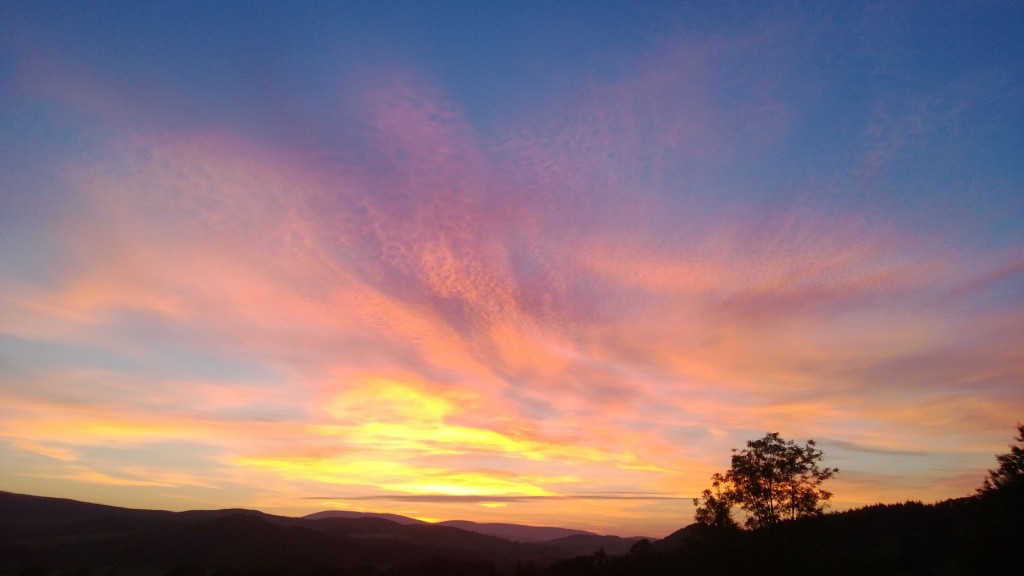
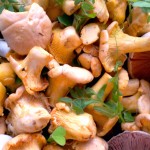
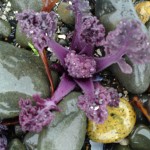
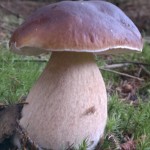
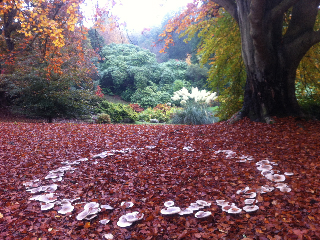
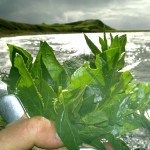
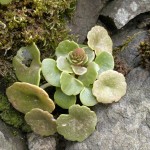
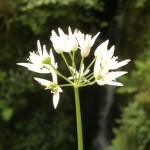
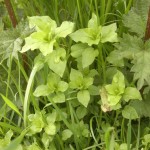
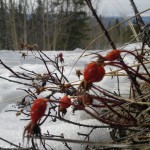
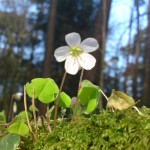
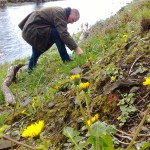
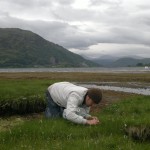
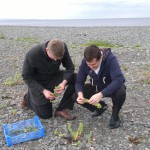
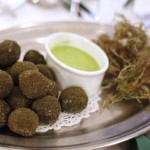
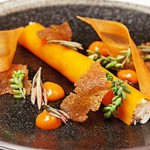

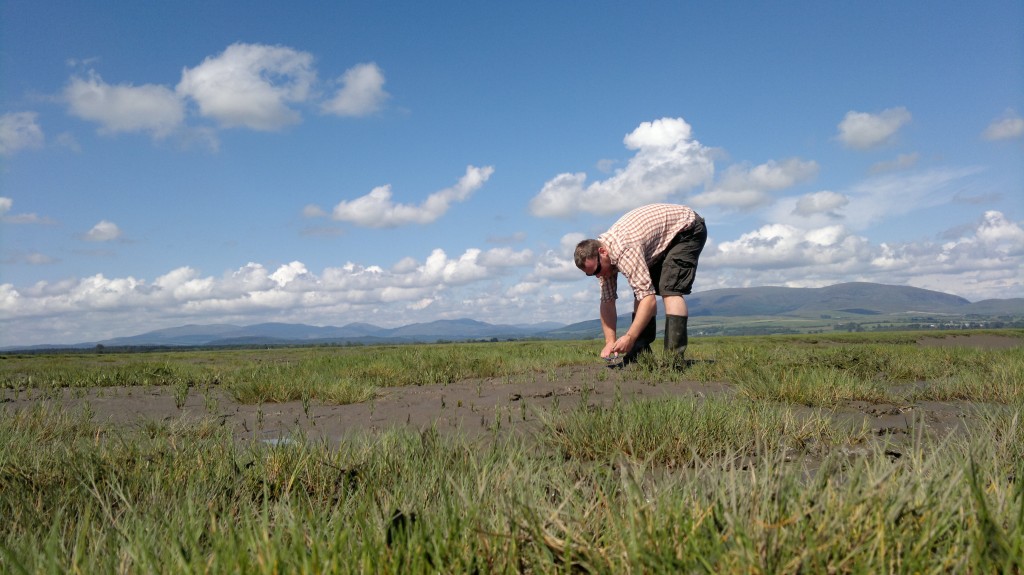



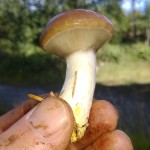

15 Comments
Thank you for a well written and thoughtful article. I have shared this link in a few places, as this is also very pertinent here in Australia. Educated foraging is a joy!
Thanks for the feedback Rachael. Here’s to enlightened foraging!
I think this is a good read. I agree with most of your comments and share your anger at pickers of small, immature fungi. A close friend of mine is a professional forager and he gets wound up by this no end. I have been on a couple of foraging courses and its not mentioned enough.
However, if I may say a word for his profession..
You attribute the upsurge in interest in foraging to the natural, local foods movement and celebrity chefs creating a market for foragers to sell their wares.
I don’t feel that you are giving professional foragers any credit. In fact the upsurge in interest has surely been driven, at least in part, by those who have created a market for their products locally by educating and inspiring chefs and indirectly inspiring diners at their restaurants.
I wonder how many subscribers to your foraging courses have been inspired by eating wild foods at a restaurant and want to learn more? Or how many are “foodies”? I don’t think its far fetched to say that such positive experiences can foster a greater appreciation of wild places. We need more of this in todays world, particularly on this island where we have become so disconnected.
Naturally foraging businesses rely on wild foods as a “commodity”, but so does your business. Both make money from the value of wild foods. There is effectively no moral difference between the two. The end result is people converted into amateur foragers by your education which will also have a direct impact on wild species equivalent to that of professional foragers.
I personally don’t believe that this impact is a negative one (as long as a forager is not hell-bent on destruction and small mushrooms are left alone!!) Most plants are adapted to such grazing and the idea of “foragers as stewards” is a good one: they have a vested interest to conserve an area.
Lets hope the cringe worthy reporting has peaked!
Thanks for your thoughtful response Colin.
I agree that many commercial foragers inspire chefs and help drive the upsurge of interest in foraging. I think i’ve made clear that this is, for the most part, a good thing. Ultimately though, I believe foraging is more satisfying and sustainable when done to feed ones self and family. Having worked in the past as a full time wild food harvester, there is a substantial difference for me between foraging for ingredients to send to a chef and teaching community groups, school kids and individuals how to engage with wild food, supplement their diet and engage with nature.
well done good articals. I think you need a EWHA. It would give the foraging platform more clout!
Agree with most of what is said here by yourself and the thoughts of Colin. I think it’s difficult to contextualise where we are as a species and what’s happenig with wild-crafting. I feel like you Mark that a more ‘subsistence’ approach, if that doesn’ sound too pretentious, to harvesting is a more ‘satisfying’ and perhaps edifying way of relating to what the rest of Nature has to offer for our sustenance.
The bigger picture for me is far more important in the longer-term as you intimate Mark. We have had and still do retain some folkloric perspective as people like Richard Mabey in Flora Brittanica have higlighted. The fact that our dysfunctional relationship with the land happened a lot earlier than many other countries should not blind us to the fact that we are no different in having had this intimacy with natural processes and that our deference to the scientific community has obscured a lot of what we already know. Another importnat aspect is the political/economic perspective that means for a multipolicity of reasons – economically driven our access to land has diminished to the point where we are given ‘permission’ to view the land but not be part of it unless ‘allowed’ by landowners even those who are allegedly acting in the interesets of ‘society’ – National Trust, Forestry Commission for example – and that there are still many individuals sitting on tens of thousands of hectares of land that their forebears STOLE, that they cannot possibly need to meet their subsitence needs and prevent the majority of us from the possibility of joining in. Until land is nationalised and a centrally planned system of tenure is put in place the general populace of this island will not enjoy and sustain the intimacy of relationship with the rest of Nature that is necessary if everybody is maintain an ongoing love and knowledge of the complexity of the web of life that they are part of.
In addition, the expectation that the media for the most part will do anything other than misrepresent what is happening in such a complex of relationships is misplaced. The work that you are doing Mark is higly necessary and commendable and the more that we have people like yourself delivering the learning opportunities for the public the better chance we have when the opportunity arises to go forward with a deepening sense of LOVE of the rest of Nature and ourselves.
Thanks for all of this Mick. Its an interesting and important debate. There is a move in well-defined rural communities in Scotland to take/buy back land for community management that I find extremely encouraging, although it is still just a tiny part of a big and challenging picture. If you haven’t already, check out Eigg community, the work of Andy Wightman (“Who Owns Scotland?”) and i’m just starting Lesley Riddoch’s “Blossom” which looks like its going to go heavily into this area.
Forgot to say in previous post submitted. In the much bigger picture I believe humanity is at a point in its evolutionary process that if it cannot re-develop this intimacy and respect for the rest of Nature then Nature will make the decision for them and under those circumstances perhaps it will be only those peoples who never stopped respecting the rest of Nature who will survive and that might just be for the best.
Hi Mark,
Good article and it is an important discussion to start having. Recently I personally spoke with an ecologist who was employed in Africa to study and record the environmental impact of harvesting wild plants. I asked him how long it takes to gauge the environmental impact of humans harvesting wild plants. His answer even surprised me… a minimum of ten years! I deliberately sought out someone highly qualified in this area, because I had a discussion with a notorious commercial forager who had literally strip mined a whole area of sea purslane. I mean that stuff grows for acres for pity sake. When challenged his reply was, I kid you not, that he had watched the patch for a year and only the birds ate from it. Finches to be specific. And in the next breath went on to state that “we need to push nature to her limits until she buckles”… err, excuse me isn’t that the same mindset that has brought the earth to ecocide. Oh well, never mind, just keep on shopping folks (sic).
Hi Robin,
Thanks for joining the discussion.
Your commercial purslane-stripper sounds like quite a piece of work…extraordinary to think that the Finches’ use of the sea purslane was irrelevant to him. The complexity of interrelationships in nature is breathtaking and its hard to imagine ever being able to fully comprehend the impact of habitat destruction – be it by thoughtless foragers, greedy agribusiness or industrialisation. I guess all we can do is tread lightly ourselves and encourage others to do similar.
I have a friend who works with indigenous peoples in Malaysia (mostly helping them to resist exploitaion/loss of forest resources to oil palm business) and he returns with great stories of the vast variety of foraged and hunted food that is eaten. I think this is key, whether subsisting on, selling or cooking wild foods in a commercial kitchen: variety. Have a range and repertoire that means you don’t need 1 specific plant or fungi to make your dish. Be flexible and sensitive and don’t get obsessed with the “glamour” species. L’Enclume don’t “run” a specific menu, but work from a repertoire, according to what is good and abundant. I liked this message so much, that they almost convinced me to supply. But to be honest, even amazingly loved and cooked as the wild plants would be there, I still think people would enjoy picking for themselves and cooking the wild ingredients simply (and possibly outdoors), much more. Also, i’m way too lazy and not interested enough in money to spend hours gathering things for people who are only going to appreciate one dimension of their beauty!
I know you are spreading great messages about all of this and more and i’d love to hear you “at work” as well as hang out with you “at play” some time. I hope we can, in our ways, contribute to a more mindful, satisfying and sustainable foraging culture.
Happy foraging – enjoy your down-time!
Mark.
PS. And don’t forget, you are always welcome at our place in Galloway if you want to relax somewhere different!
The urge to forage is a response to a calling from deep within us to fly from this ghastly artificial world we have created. Those who can not or dare not try to turn dreams into reality lash out at us people… the artists, the strangers far from home, the comuners with nature. We make there processed lives look rather shitty and as Sinatra sang “Some people get their kicks stomping on a dream”
The ‘Fleecy Milkcap’ (Lactarius vellereus) pictured looks like it could be ‘Woolly Milkcap’ (Lactarius torminosus).
Well spotted Dan! Certainly is wooly milkcap – a lapse of concentration…fortunately not painful! Now corrected. 🙂
Eating small amounts of food more regularly also helps reduce
bloating and definately will allow you to sustain your energy
levels. There are lots of us out there who will help you totally
free so keep your debit card inside your pocket.
There is a lot to be considered with regards to having surgery and
yes it ought to be done properly and really should not be done hastily.
Well said and thanks for writing this. There is an article in the Telegraph at the moment sweating about foraging in royal parks taking away the sustenance of the wildlife there….maybe, but I couldn’t help feeling that it was just thinly-veiled feudalism. The truth is the aristocracy just don’t want the common people on ‘their’ land.